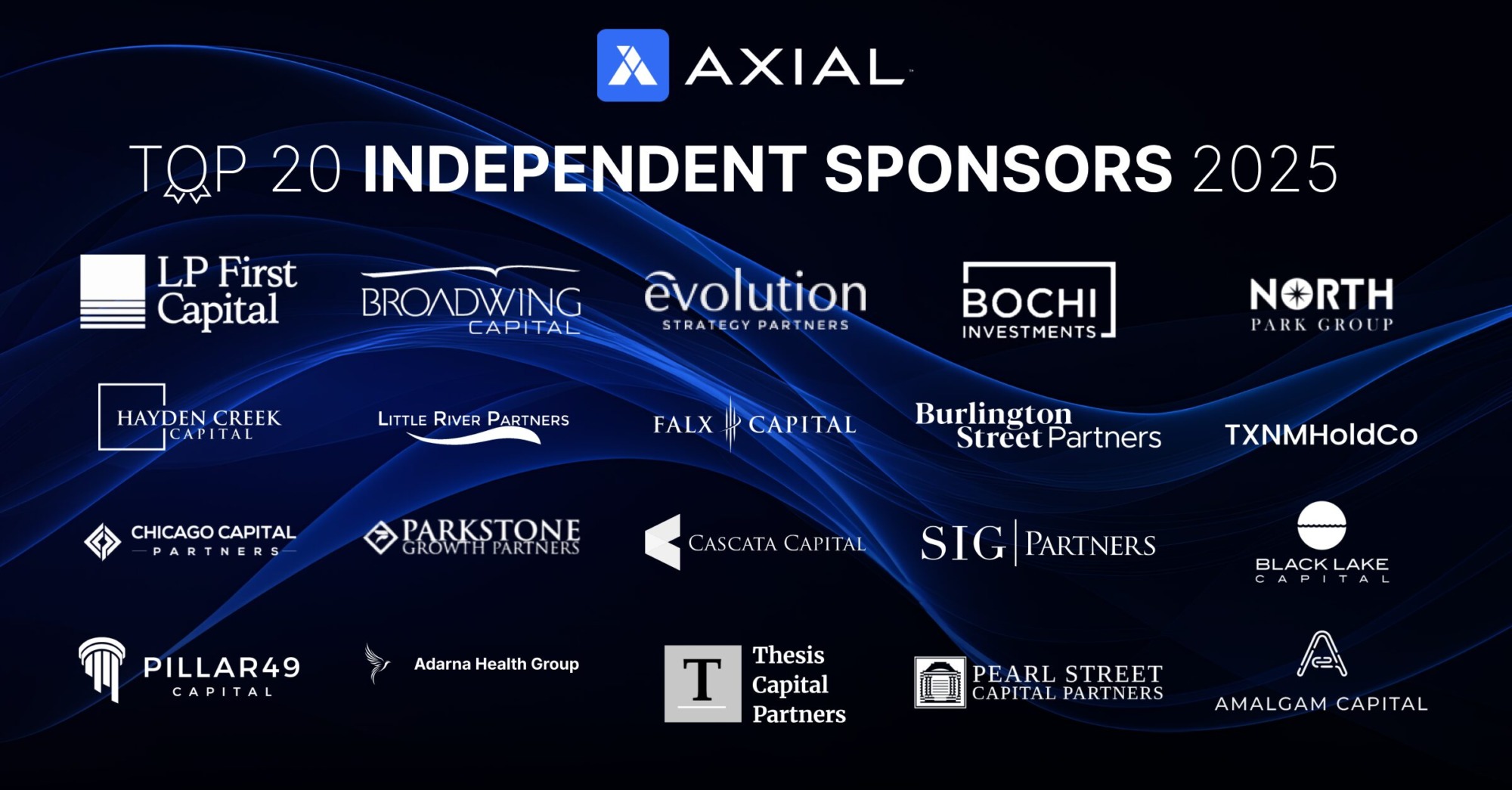
The 2025 Top 20 Independent Sponsors on Axial
We are thrilled to release the 2025 list of the Top 20 Independent Sponsors on Axial! This ranking highlights the…
At the end of May, Cambridge Associates’ global head of private investments, Andrea Auerbach, published an article discussing the returns of private equity mega funds. Cambridge defines a mega fund as a fund that has raised $10 billion or more. The firm has calculated that mega funds constituted one-third of the estimated $629 billion of dry powder in the U.S. private equity market that was available at the end of 2017. There’s no question that the resources available to these funds come with some advantages – such as access to leverage, the ability to engage with top tier advisors, and a deep network to recruit the best talent for their portfolio companies. Based on these facts, the obvious conclusion to draw would be that more resources should lead to above market returns.
However, Auerbach’s article tells a different story. According to the article, mega-fund returns are more akin to those of the public markets than they are to private equity funds of other sizes. On a three, five- ten and 12.75-year basis (through September 30, 2018), Cambridge’s analysis shows that global mega funds returned 15.6%, 14.9%, 13.5%, and 10.5%, respectively, essentially neck and neck with the Russell 3000® ‘s performance on an mPME basis. Mega-fund returns are also more than 60% correlated with public indexes, nearly twice the correlation of funds of less than $1 billion in size.
Limited partners are aware of the issue and are starting to make changes to their investment programs as noted in a recent Wall Street Journal article. According to the article, California Public Employees’ Retirement System, the largest U.S. public pension fund, which aims to commit between $10 billion and $13 billion a year to private equity, is exploring a new model for investing in it. Under the current plan, the pension fund would become the sole backer of at least two limited-liability companies. These companies would be overseen by outside managers, who would invest directly in companies on Calpers’s behalf. The fund would also continue its regular investments in private-equity funds.
To learn more about why mega funds aren’t producing the outsized returns one might expect, Axial sat down with Auerbach to discuss her firm’s findings. Here is an excerpted version of the conversation.
Mega funds, which we would define as funds with $10 billion or more in commitments, as a cohort seem to be delivering returns that are in line with public market comparables. Some mega funds are doing better than that but as a group, they are not really distinguishing themselves.
Size does benefit mega funds in some ways – it gives them access to incredible resources that smaller funds may not be able to access, and with fewer of them to compete for investments, they may be investing in a more rational tier of the market (compared to the thunderdome of the lower middle market!). However, as mega funds continue to scale towards $30 billion and beyond – I’m excluding Softbank as I say this – they will have to find a way to invest that capital productively, which may require them to go after even bigger companies. Those larger companies, whose enterprise values are in the tens of billions, are often already dominant market leaders with substantial footprints, making it even harder for private equity firms to add value in a way that would result in classic private equity returns. As I have said, size is the frenemy of performance. While mega investments may have a lower risk of loss than smaller funds, we have observed they do not deliver the same degree of upside potential.
Not all smaller funds perform better(!), but the dispersion of returns is much wider. Smaller funds typically make investments in smaller companies, which have longer runways in terms of growth (compared to large companies) and multiple ways to win as well. Smaller companies also have multiple exit options, including being sold to larger private equity funds or larger companies, and in certain circumstances, going public. Importantly, there are more smaller funds than larger funds, so manager selection is key, and that is what we focus on.
The institutional private equity industry is 30 something years old and and still evolving. Teams need to be focused on establishing and executing a sustainable competitive advantage. Funds with a sector-focus and/or a focused strategy have competitive advantages. We have observed that sector funds outperform their generalist counterparts. A focused strategy can be equally effective; however, the contour of the returns is specific to the strategy. To take this one step further, there are, of course, funds with both a sector focus and a specific strategy – think lower middle market fintech growth equity. There is enough depth and breadth in the industry to allow for these spaces to fully develop with multiple investible options. I would argue all of this is right on time given the age of the industry.
We’ve been talking about the challenges and opportunities that funds of different sizes may face, and it’s important to acknowledge that LPs vary in terms of size and appetite for risk and return. What we have observed is the overall returns of private equity have continued to attract a steady stream of new capital via new or increased allocations to the space. In addition, as the public equity capital markets have shrunk in size and public equity investors have moved out of active strategies into passive strategies, the private markets are starting to play multiple roles for investors.